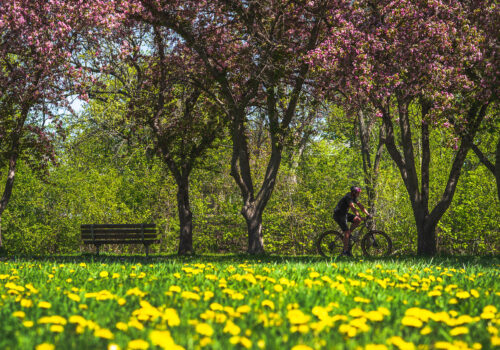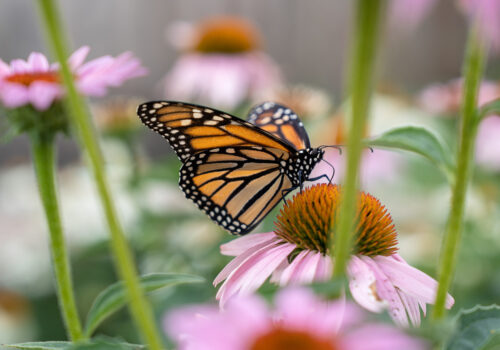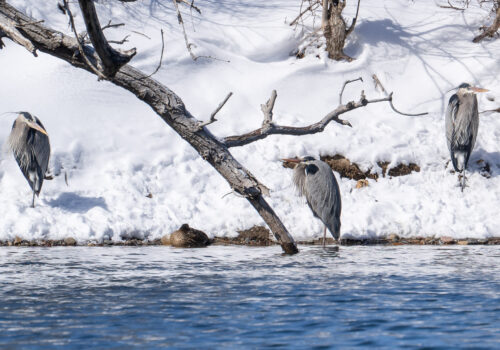Before-and-After Photos Show How Eco-Friendly Landscapes Improve with Time
One of our constant challenges here at the MWMO is to capture photos that properly convey how our projects transform landscapes. A newly planted raingarden or restored prairie often doesn’t look like very much — a sheet of mulch dotted with tiny, baby plants and trees. In order to really see the transformation, you have to return year after year and observe how those landscapes grow, evolve and thrive.
With this in mind, last month we revisited several MWMO project sites from previous years to see how their landscapes were holding up. We found that, with minimal maintenance, these eco-friendly landscape designs have only grown more attractive and functional over time.
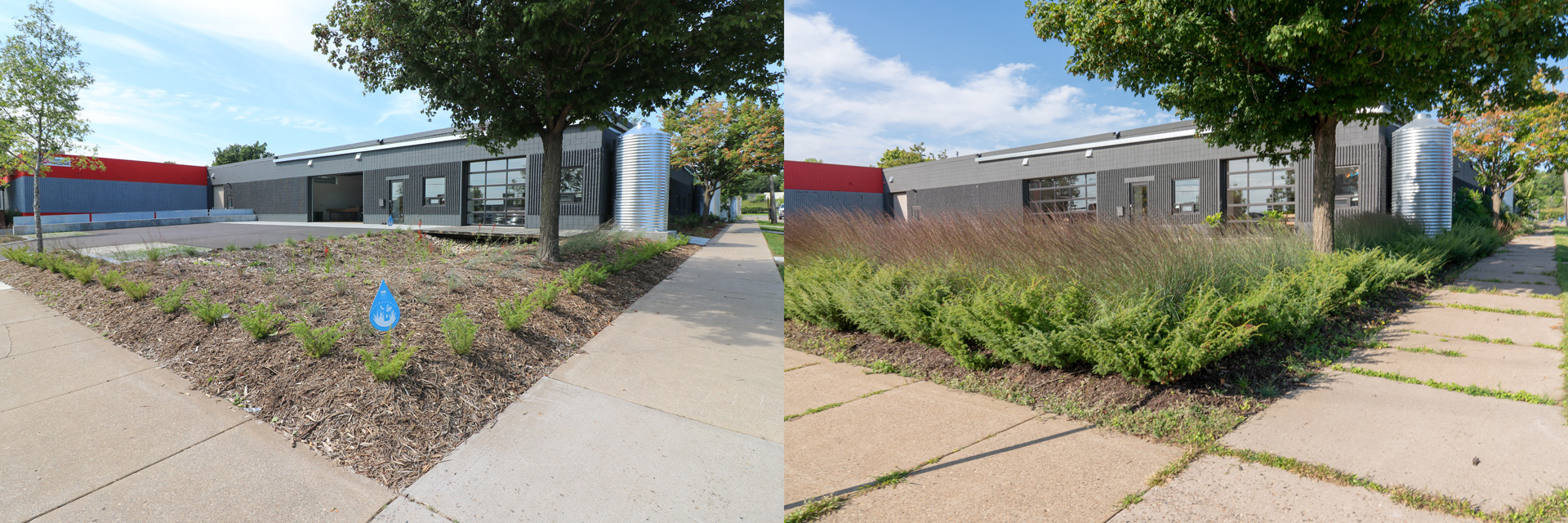
While native plants may not look like much when they are first installed, they grow quickly. By their second or third year, they’re already on their way to being well established. Take Fourth Street Guild for example (see above). Their native plantings turned three years old in September, and they look better than ever!
To be fair, the Guild’s redesigned landscape looked good from day one; in fact, we wrote a whole blog post about it. Their Stewardship Fund Grant project represented a unique investment in green infrastructure in a highly industrialized part of North Minneapolis. Now, with that part of the city set to transform via projects like Upper Harbor Terminal and the Great Northern Greenway Overlook, Fourth Street Guild stands out as a shining example of sustainable urban redevelopment.
Native plants like these provide an attractive alternative to traditional lawns and landscapes. Native plants were here before we were, and are adapted to the local climate and soil conditions. Therefore, they are more resilient to droughts, pests and diseases than non-native plants. Native plants are also cost-effective because, once established, they seldom need watering, mulching, or protection from frost and pests.
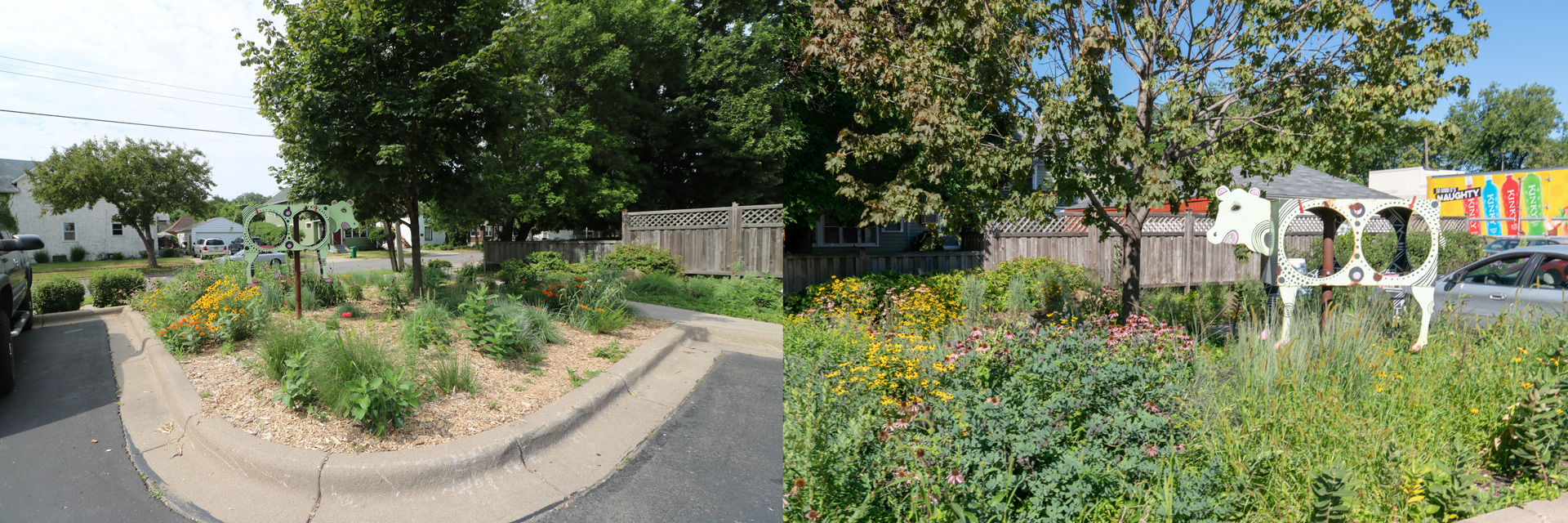
Native plants also serve an important stormwater management function. Over time, native plant roots grow deeper and break up compacted soil, allowing more stormwater runoff to infiltrate into the ground rather than run off into stormdrains. Eight years ago, Sentyrz Supermarket added a series of large raingardens and a native prairie area to their property to manage its runoff. Imagine how deep those native roots must be after eight years of establishment!
Native plants are also highly beneficial to native bees, butterflies, birds and other wildlife. This was apparent while revisiting the Minneapolis Sculpture Garden’s vibrant “fresh meadow” (essentially a large native prairie), where we spotted many busy bees and monarch butterflies.
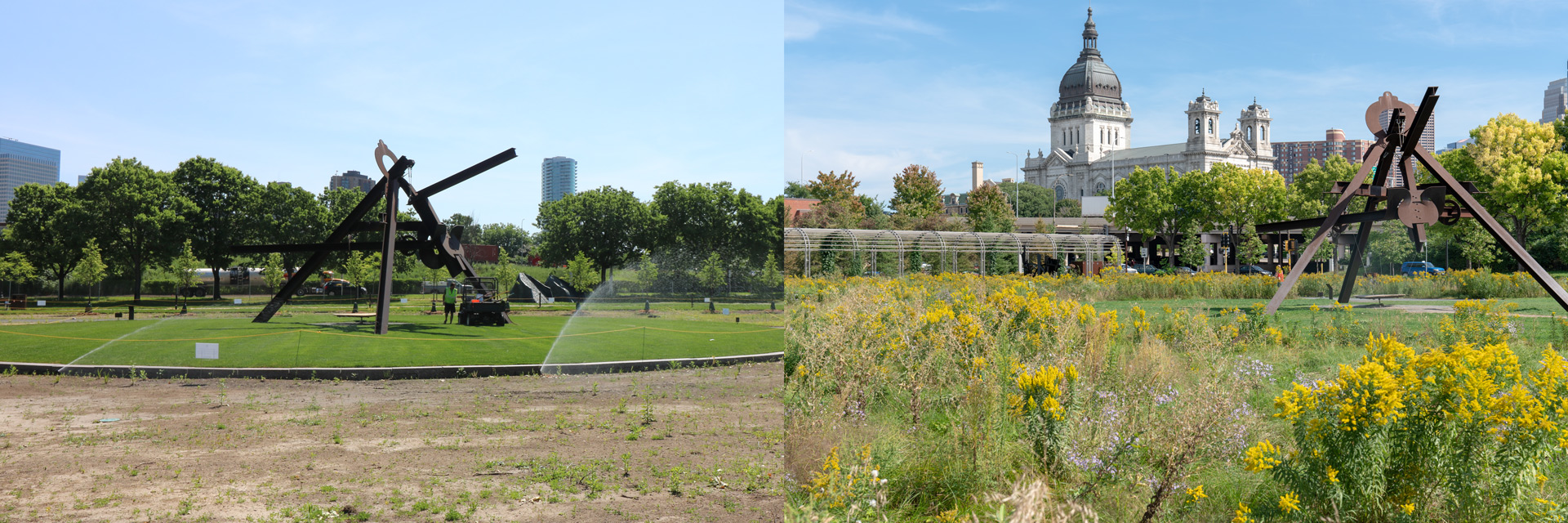
But it isn’t just pollinators that are attracted to the new sculpture garden. Each year, hundreds of thousands of visitors from all over the world observe the Minneapolis Sculpture Garden’s eco-friendly landscaping. Prominent interpretive signage at the garden shares the importance of native landscapes with these visitors.
We are also seeing native plants used in innovative ways at some of our newer projects. Consider Mill City Church, which upgraded its shared meeting space, Mill City Church Commons, last summer with an inventive stormwater-friendly landscape.
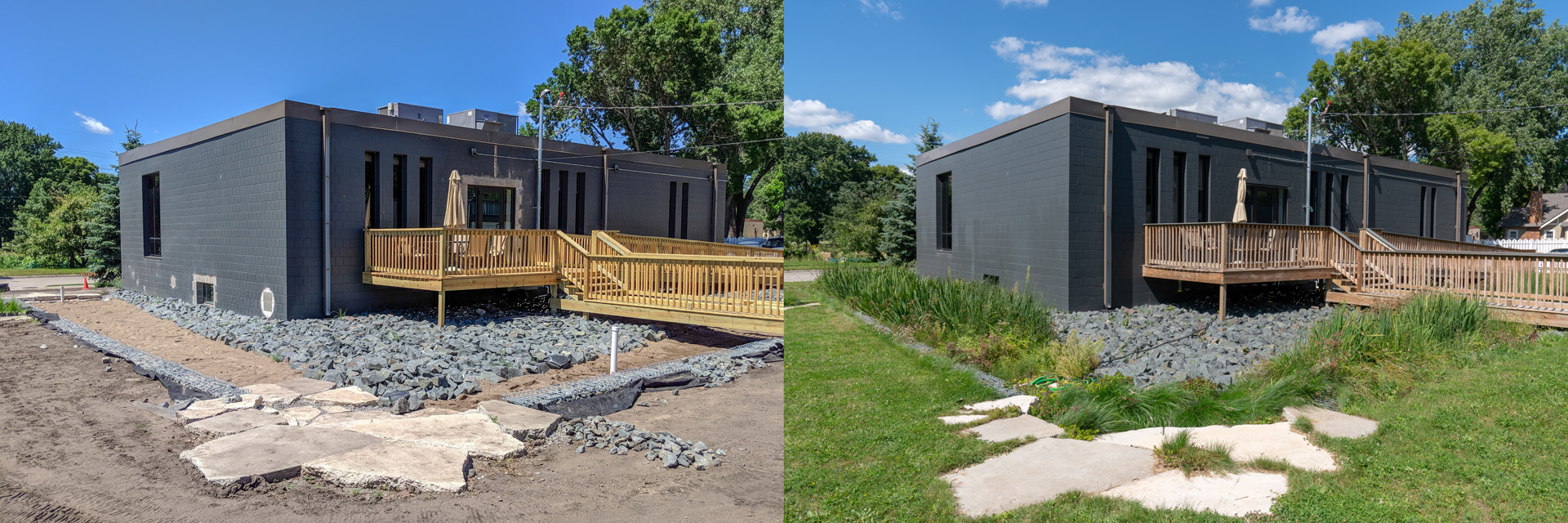
Mill City Church Commons’ unique design takes water from the building’s sump pump and conveys it through a channel filled with aggregate and topped with a layer of sand. A separate raingarden captures and treats runoff entering the site from adjacent properties. Check out how much this landscape changed in just one year. It’s satisfying to see the plants growing so quickly, and judging by the abundance of frogs we spotted on site, the planting areas are providing excellent wildlife habitat.
Native plants can dramatically transform large landscapes as well, as is the case with the Towerside District Stormwater System. Constructed three years ago, the system’s main stormwater basin is planted with a variety of vegetation that has been working hard to treat dirty stormwater runoff — as you can see from photos like this one. These plants and the soils they grow in filter stormwater before it is collected in a 206,575-gallon underground concrete storage tank. Again, notice how much the plants have grown. (Also note the water in the basin in the second photo — proof that native plants are hearty in both wet and dry conditions.)
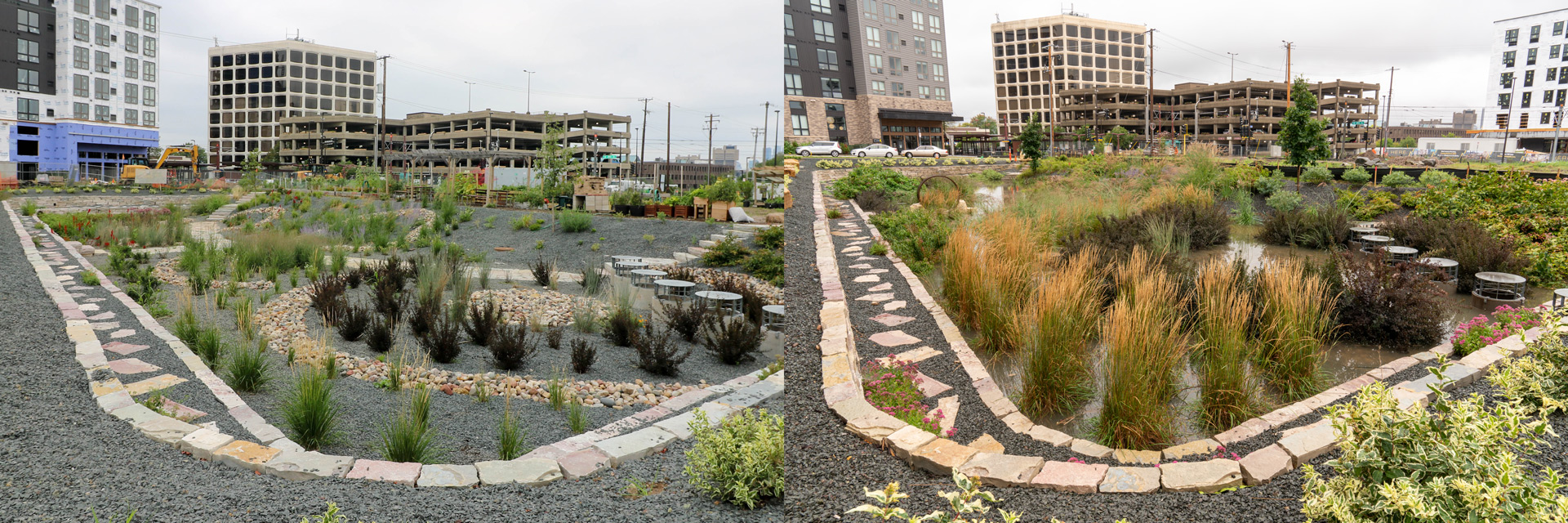
Of course, these eco-friendly landscapes aren’t completely maintenance-free. Just like any other garden, native plants and raingardens need some basic maintenance to stay healthy. You will need to weed your garden at first, but less weeding will be required as they mature; one of the benefits of native plants is that they resist weeds better than traditional, turfgrass-dominated landscapes. Also, clear any dead vegetation or debris that may periodically accumulate. If you follow these basic steps, your native garden will become more eye-catching and eco-friendly with time. (Bonus: Check out our primer on raingarden maintenance.)
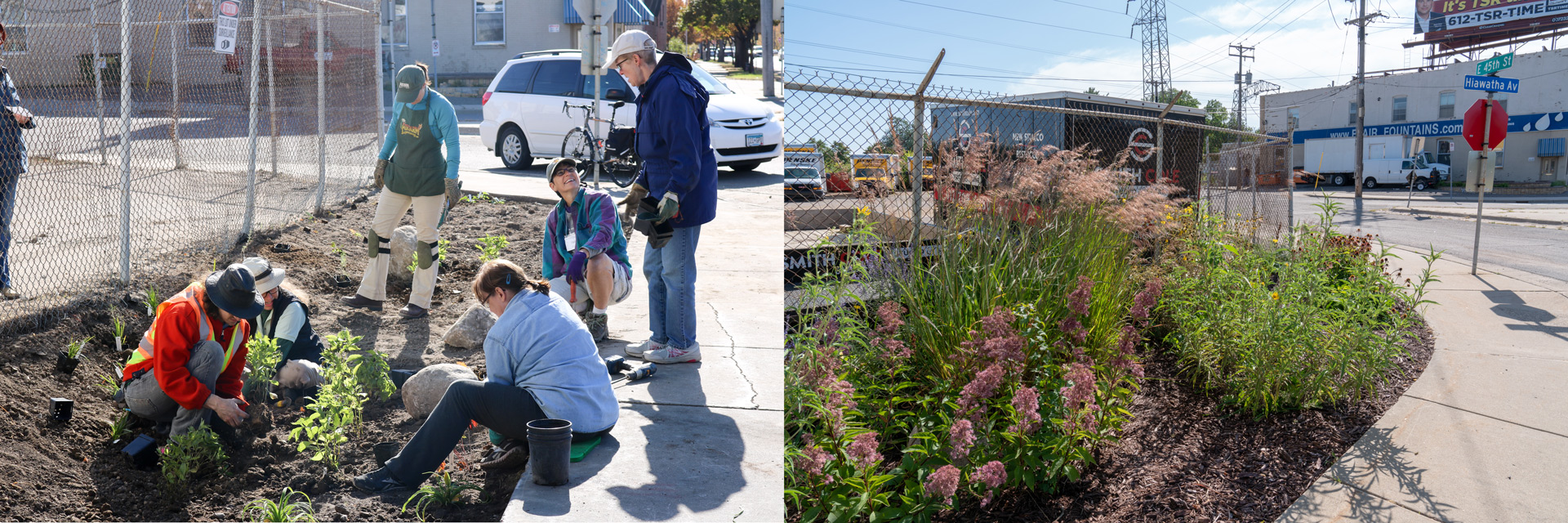
Even small sites can show dramatic transformations over time. In 2015, the volunteers pictured above planted a series of boulevard raingardens at Hiawatha Reddy Rents, thus adding a splash of colorful, stormwater- and pollinator-friendly plants to a previously drab stretch of urban roadway. An MWMO Stewardship Fund Mini Grant helped fund the project. Take a look at it now! Notice how much the plants have grown. A well-maintained native landscape will yield a variety of public benefits for many years to come.
Tranform a landscape in your neighborhood: Do you have an idea for adding native plants to your community? The MWMO offers grants to eligible organizations to help fund sustainable, water-friendly landscapes like these. Learn more in our Grants section.

